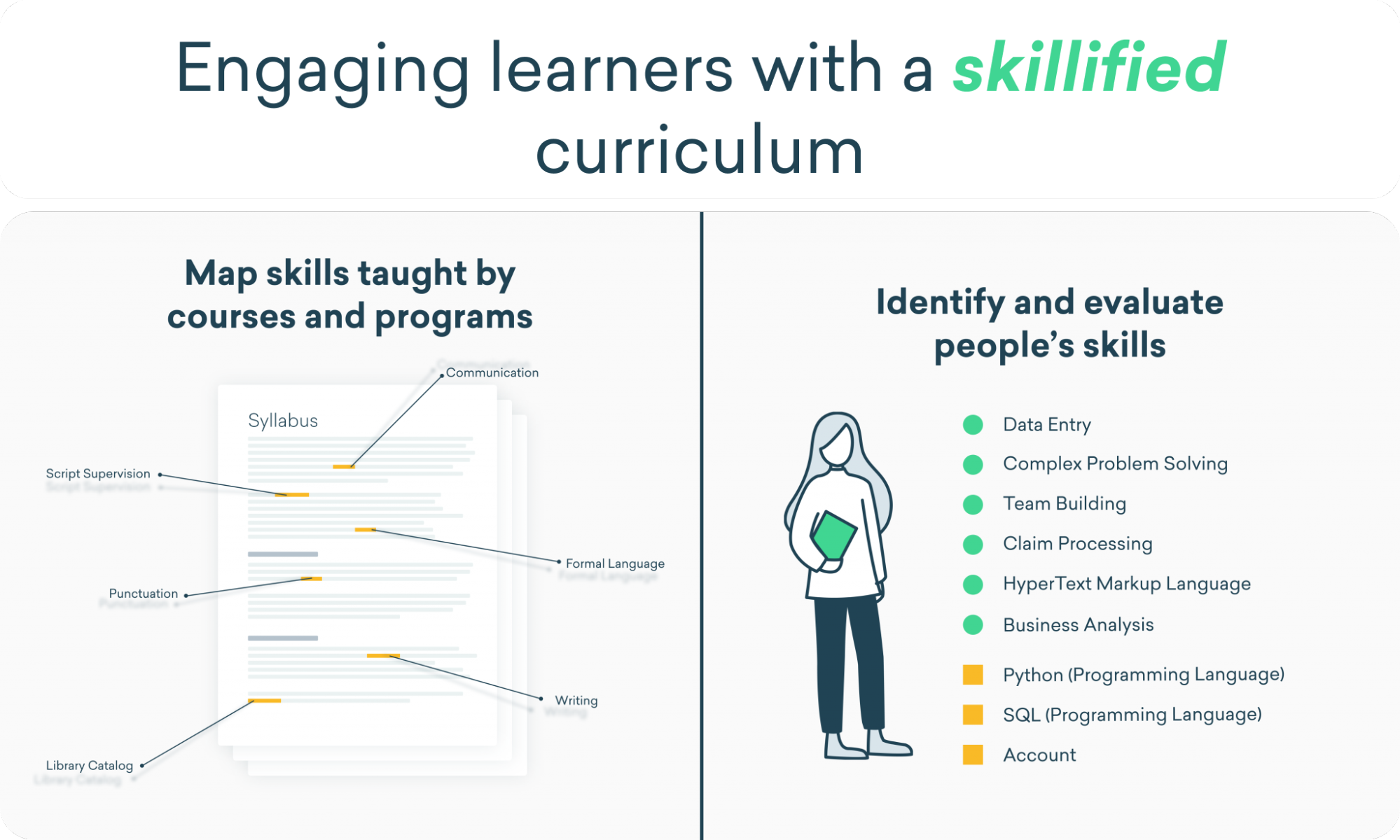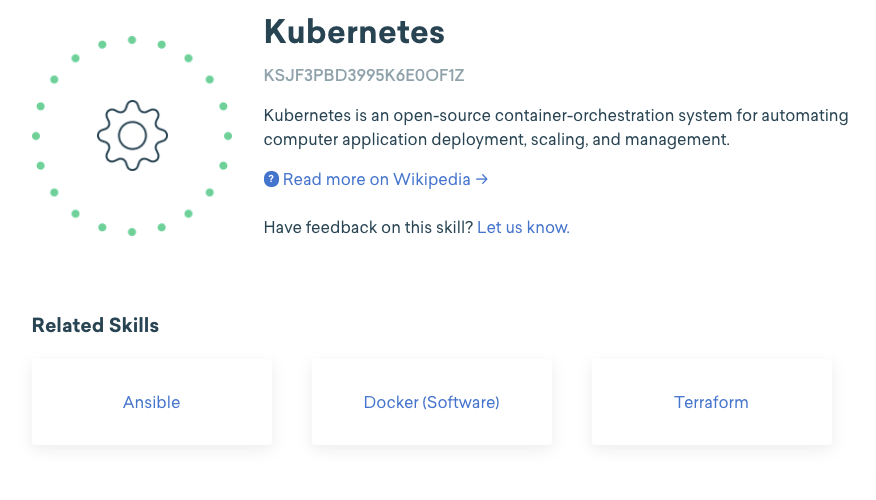How College Curriculum Can Speak the Labor Market’s Language
4 ways educators can use skills to engage more learners, employers

Shorter. Skill-focused. Work-relevant.
Throughout 2020, as the COVID-19 pandemic has impacted the job market and influenced Americans’ views on postsecondary education, feedback from potential learners continues to confirm that these are their top criteria for evaluating education options. Data from Strada Education Network’s Public Viewpoint survey show that 62 percent of Americans prefer nondegree or skills-based training options, citing better value as their top reason. Thirty-eight percent cited relevance to their work as the most important factor in choosing an education program.
These trends may have been underway before COVID-19, but they have been amplified and accelerated by the uncertainty — economic and otherwise — brought about by the pandemic. In this environment, learners are increasingly looking for education that can help them quickly acquire in-demand skills and enhance their value in the workplace.
Translating education to skills
As learners’ priorities and preferences become increasingly focused on work and skills, colleges and universities should begin to evaluate their academic offerings through this same lens. This requires translating curricular content, such as course descriptions and syllabi, into the skill-based language already used as a common currency by employers and job-seekers — a process Emsi calls “skillifying” curriculum.
Skillifying starts with identifying the work-relevant skills that your college or university already teaches in the courses you already offer. Here are four examples of how this translation can unlock insights that help educators better serve today’s learners and thrive in the modern skill-based economy.
In today's labor market, employers, educators, and job seekers often speak different languages. Skills provide a shared means to communicate.
Four key advantages of a skillified curriculum
1. Better align programs with market needs
Because skills are a shared language, articulating your curriculum in these terms allows for a more direct comparison with skill-based signals from the labor market. This means you can more efficiently assess the demand from employer job postings, the supply from professional profiles, and identify the opportunities where your curriculum can fill the gaps between them.
Likewise, you’ll be able to offer a more targeted curriculum that addresses these gaps at the skill level. For example, perhaps local employers are looking for data visualization skills and are mentioning tools like Tableau or Power BI when posting for business analyst roles. If you already teach these skills in your existing Business Analyst degree program, you could unbundle the program by repackaging relevant courses into a data visualization certificate or microcredential. The shorter, more focused credential may be a better fit for working professionals looking to upskill.
See how your institution can take a skill-based approach to creating work-relevant credentials. Click to learn more.
See how your institution can take a skill-based approach to creating work-relevant credentials. Click to learn more.
2. Better engage employers
It’s easier to be on the same page when you speak the same language. With a skillified curriculum, you’re better equipped to collaborate and proactively engage with industry partners, demonstrating how the skills taught in your curriculum are preparing future job candidates or providing upskilling and advancement opportunities for their current workforce.
Of course, partnerships are a two-way street. With a skillified curriculum, you’ll have the structure in place to implement employer feedback on the skills they value most, allowing you to quickly and confidently pinpoint the courses that are best suited to integrate their suggestions. You can even compare required skills from a specific job posting to skills taught in your program portfolio to efficiently assemble credentials that target employer needs.

With a skillified curriculum, institutions can help learners find the right course or program by aligning an individual’s skill gaps to the skills taught in academic offerings.
With a skillified curriculum, institutions can help learners find the right course or program by aligning an individual’s skill gaps to the skills taught in academic offerings.
A skillified curriculum can help you demonstrate to students that they don’t have to choose between a college degree and work-relevant training that translates to career value. They can have both.
3. Market programs to students more effectively
Data continues to pour in confirming that today’s learners are eager for education options that provide work-relevant skill training with a recognizable return on investment for their career — a trend amplified by COVID-19. The more clearly they can see the connections between education and career advancement, the more value they see in a program.
What better way to engage these learners, including many working adults, than by clearly articulating the skill content embedded in your academic programs? A skillified curriculum can help you demonstrate to students that they don’t have to choose between a college degree and work-relevant training that translates to career value. They can have both.
A skills-denominated curriculum can also enhance your ability to show students how your courses align with their personal skill gaps. For example, the SkillsMatch platform allows learners to inventory their own skills (based on prior work and learning) and then recommends the most relevant content based on the skills taught.
Learn how higher education institutions can benefit from skillifying their curriculum to keep courses relevant to employers’ needs and communicate to learners and employers the skills being developed.
4. Better equip students to market themselves
When colleges and employers are aligned, everybody wins – especially students. Not only is the curriculum itself more relevant to a student’s future career (see point No. 1, above), but they are also better equipped to articulate the skills they acquire through their education.
Much of this will happen organically as institutions make the skill content of their courses more transparent to students. But colleges and universities can facilitate this process by formally connecting their courses to labor-market skills.
There are paid solutions which can assist with this process, including a new integration with Badgr which allows institutions to link their digital badges with machine-readable skill data from Emsi’s open skills library. This skill data connects seamlessly to real-time labor market insights, including job posting trends, top companies’ posts, and related skills — all of which are available on public skill pages, like this one for Kubernetes. This gives learners, educators, and employers additional context to understand the labor market value of skills associated with a credential.
The Emsi Skills Library provides definitions and additional context for most skills. Click to learn more.
The Emsi Skills Library provides definitions and additional context for most skills. Click to learn more.
But digital badges aren’t the only option. Equipped with a skillified curriculum, educators can use that information to incorporate skills into transcripts, upload courses’ skill content to shared databases like Credential Engine, or participate in other Learning and Employment Record initiatives. The key first step for any approach is translating a curriculum into the common language of skills.
Expanding skill data in higher ed
This list is not comprehensive, but it highlights some of the key ways that a skillified curriculum can help colleges and universities adapt to better meet the needs of today’s learners. Leading institutions like Purdue University Global and Western Governors University are already demonstrating the viability and effectiveness of this approach. By adopting the same shared language of skills and collaborating through coalitions like the Open Skills Network, education leaders can play a critical role in expanding skill-based education to create more efficient pathways to opportunity for today’s learners.
Emsi is an affiliate of Strada Education Network that provides labor market data and consulting to help connect people, education, and work.
See These Related Resources
From Strada Education Network:
- Emsi/Strada Report: The New Geography of Skills
- Roadtrip Nation: Career Exploration Map
- Education at Work: Student Debt and the Skills Gap
- CAEL: Virtual Conference, Nov. 4-6, 2020
- InsideTrack: Landing a Job in the Time of Coronavirus
This content was paid for and written by Emsi. The editorial staff of Inside Higher Ed had no role in its preparation.



